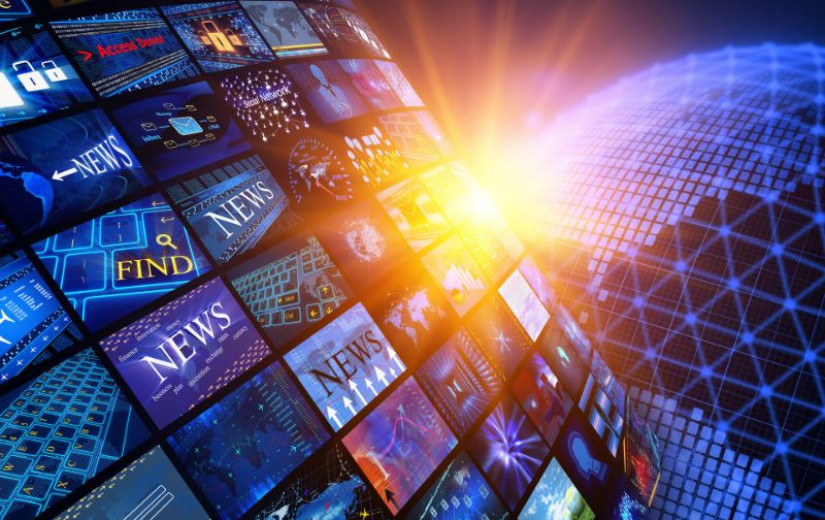
? Microsoft's 2025 strategy in numbers:
❌ 15,300+ employees laid off (7% of workforce) YTD:
•9,000 cuts announced July 2
•6,000 cuts in May
•300+ cuts in June
•Performance cuts in January
•and only halfway through year? $80 billion invested in AI infrastructure
40%… pic.twitter.com/LJVfwStpW9
— Jason ✨?SaaStr.Ai✨ Lemkin (@jasonlk) July 2, 2025
The tech giant’s massive workforce reductions coincide with record-breaking AI investments, signaling a fundamental shift in how Microsoft views its future workforce
Microsoft’s strategic pivot has become unmistakably clear in 2025: fewer humans, more machines.
As the technology giant implements what amounts to its most aggressive workforce reduction campaign since 2014, eliminating approximately 15,300 employees across multiple rounds of cuts in just the first half of 2025 alone — while simultaneously committing $80 billion to AI infrastructure — the company is telegraphing a vision of the future where artificial intelligence increasingly replaces human labor.
Perhaps even more significantly, revenue growth has become decoupled from headcount growth:
Microsoft is projecting 14%+ revenue growth this year, with up to 10% fewer employees:

The Numbers Tell the Story
Microsoft’s 2025 workforce reductions have been extensive and systematic. The company announced in May that it would lay off about 6,000 people, followed by at least 300 more cuts in June, and most recently announced another 9,000 layoffs in July 2025. Combined with smaller performance-based cuts in January affecting less than 1% of headcount, Microsoft has eliminated approximately 15,300 positions in 2025 alone—representing nearly 7% of its global workforce of 228,000 employees.
These aren’t random cuts across the organization. In Microsoft’s home state of Washington, software engineering was by far the largest single job category to receive layoff notices, making up more than 40% of the roughly 2,000 positions cut in the May round.
Microsoft announced its most recent round of cuts on July 2, 2025, affecting about 9,000 employees—less than 4% of its global workforce. This follows the May announcement of 6,000 layoffs, at least 300 additional cuts in June, and smaller performance-based reductions in January. As one person familiar with the matter told CNBC, Microsoft is continuing to reduce the number of layers of managers that stand between individual contributors and top executives.
The escalating pace of job cuts is particularly striking given Microsoft’s strong financial performance and comes after CEO Satya Nadella revealed that up to 30% of the company’s code is now written by AI, with Microsoft CTO Kevin Scott predicting that number could hit 95% by 2030.
Meanwhile, Microsoft is on track to invest approximately $80 billion in AI-enabled datacenters around the world during fiscal year 2025 – a significant increase from the $53 billion capex spend Microsoft made in 2023.

Layoffs Across Tech Leaders
Microsoft isn’t alone in its workforce reduction strategy. The tech industry’s largest companies have all implemented significant layoffs in 2025, with CEOs increasingly linking these cuts to AI adoption and efficiency gains.
Meta: Mark Zuckerberg announced in January that Meta would cut approximately 5% of its workforce—about 3,600 employees—targeting what he called “low performers” to make room for AI investments. In his internal memo, Zuckerberg stated: “This is going to be an intense year, and I want to make sure we have the best people on our teams. I’ve decided to raise the bar on performance management and move out low performers faster.”
Google/Alphabet: Sundar Pichai announced a 10% reduction in managerial roles as part of Google’s yearlong push for efficiency. Despite this, Pichai has taken a more optimistic stance on AI’s impact, telling Bloomberg: “I expect we will grow from our current engineering base even into next year, because it allows us to do more. AI is an accelerator that will drive new product development, thereby creating demand for more employees.”
Amazon: Andy Jassy was the most direct about AI’s impact, telling employees that “we will need fewer people doing some of the jobs that are being done today” as the company adopts more AI tools. Amazon has already laid off more than 27,000 employees since 2022, and Jassy stated: “In the next few years, we expect that this will reduce our total corporate workforce as we get efficiency gains from using AI extensively across the company.”
The pattern is consistent across Silicon Valley: while revenue and AI investments soar, human workforces are being systematically reduced in favor of automated alternatives.
Beyond Cost-Cutting: A Strategic Transformation
While Microsoft has characterized the layoffs as organizational restructuring to “reduce layers of management”, industry observers see a different pattern emerging. Paul Roetzer of the Marketing AI Institute calls it “quiet AI layoffs”—job cuts that are ostensibly about cost savings or restructuring, but are actually driven by a belief that AI can replace (or reduce the need for) human labor.
The evidence supports this interpretation. Relatively fewer sales or marketing positions were affected in the recent layoffs, while technical roles bore the brunt of the cuts. This suggests Microsoft isn’t simply trimming costs—it’s reallocating resources based on where it believes AI can most effectively substitute for human workers.
Microsoft has also mandated AI use across its workforce, making it a part of employees’ daily workflow and performance evaluations, further cementing AI’s role in the company’s operations.
The Broader Industry Pattern
Microsoft isn’t alone in this transformation. So far in 2025, more than 22,000 workers have been laid off across the tech industry, with many companies citing AI investments as a strategic priority. Meta announced performance-based layoffs of about 5% in January and Salesforce said it would be laying off about 1,000 employees as it redoubles its AI efforts.
The pattern is clear: as AI capabilities expand, companies are betting they can maintain or increase productivity with fewer human employees. Analyst Gil Luria told Reuters that with consistent investments of this scale over the next few years, Microsoft may continue to lay off 10,000 workers to “make up for the higher depreciation levels due to their capital expenditures”.
The $80 Billion Bet on AI Infrastructure
Microsoft’s massive infrastructure investment reflects the enormous computational requirements of modern AI systems. More than half of Microsoft’s $80 billion investment will be in the United States, positioning the company to compete in what Microsoft president Brad Smith describes as a “golden opportunity” for American economic competitiveness.
Smith described AI as set to become a “world-changing general-purpose technology” and stated that “AI offers not only new tools for people’s work but also new ways to help people learn almost anything”. However, the irony isn’t lost on employees: the same technology promising to enhance human capabilities is simultaneously displacing human workers.
The infrastructure investment is also driven by competitive pressures. Having invested more than $13 billion in OpenAI, Microsoft provides cloud infrastructure to the startup and has incorporated its models into Windows, Teams and other products. Microsoft’s revenue from Azure and other cloud services increased 33% in the fiscal first quarter, with 12 percentage points stemming from AI services.
What This Means for Workers
The implications for Microsoft’s workforce—and knowledge workers more broadly—are profound. If AI is increasingly building the software, companies need fewer people to do that job. The fact that coders were hit hardest among Microsoft’s layoffs while customer-facing roles were largely untouched suggests that companies see AI as most immediately capable of replacing technical rather than interpersonal work.
This creates a challenging atmosphere where “it is obvious to most that their performance does not guarantee a successful career, despite the company’s earlier announcement of a stringent performance policy”. Employees can no longer assume that strong performance will protect them from AI-driven displacement.
The Future Workforce
Microsoft’s transformation continues with the July 2025 announcement of 9,000 additional layoffs, bringing the year’s total workforce reduction to over 15,000 employees. The company’s announcement came on the second day of Microsoft’s 2026 fiscal year, reflecting a pattern where executives typically unveil reorganizations at the time of the new fiscal year.
Microsoft executives called for about 14% year-over-year revenue growth in the June quarter, thanks to expected expansion in Azure cloud services and corporate productivity software subscriptions—growth areas heavily dependent on AI infrastructure rather than human workforce expansion.
These moves signal that Microsoft’s workforce reduction isn’t a one-time adjustment but an ongoing transformation representing one of the most aggressive restructuring campaigns in the company’s 50-year history, surpassed only by the elimination of 18,000 employees in 2014 following the Nokia acquisition.
For Microsoft, the equation is straightforward: why maintain expensive human capital when AI can perform many of the same functions at scale? As Smith noted, the company sees AI infrastructure as “the essential foundation of AI innovation and use”—a foundation that, increasingly, doesn’t require as many human builders.
The message from Redmond is clear: In Microsoft’s vision of the future, there’s room for either extensive human workforces or massive AI infrastructure investments, but not both. And the company has made its choice.









